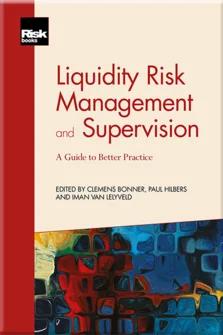How to Implement ILAAP: Lessons Learned at Rabobank
Agaath Nijboer
Introduction to ‘Liquidity Risk Management and Supervision’
Liquidity Regulation, the 2007-9 Crisis and the Regulatory Response
Sources of Liquidity Risk: Theory and Empirical Evidence
The Process of Liquidity Supervision
How to Implement ILAAP: Lessons Learned at Rabobank
Liquidity Risk Management Strategy and Tolerance
Liquidity Buffer Management and Banks’ Counterbalancing Capacity
Bank-Level Liquidity Stress-Testing
Contingency Funding Plans
Liquidity Transfer Pricing
Intraday Liquidity Risk Management
Putting Liquidity Risk Management into a Wider Context
Macroprudential Liquidity Stress Tests
A Simple Macroprudential Liquidity Buffer
In this chapter we focus on the process of implementing an internal liquidity adequacy assessment process (ILAAP).
Rabobank conducted an ILAAP for the first time in 2011 at the request of the Dutch regulator, De Nederlandsche Bank (DNB). DNB asked Rabobank to set up an ILAAP in which it had to thoroughly evaluate its liquidity risk position and management (processes) and improve them where necessary. The request was made in March 2011, when the liquidity policy rule was consulted on (the implementation date was July 1, 2011), with a submission deadline of November 1 of that year.
As the ILAAP was an entirely new process, a project team was initiated by group risk management in May 2011. The group risk management, treasury and control departments were represented in the team. The goal of the ILAAP project was to
- •
make an assessment, and identify gaps and points of improvement,
- •
prepare an ILAAP package to substantiate compliance with liquidity regulation,
- •
define an action plan to close any gaps.
The project team consisted of nine members and met once every two weeks. The project team reported to the Basel III steering committee (Basel III SC)
Copyright Infopro Digital Limited. All rights reserved.
As outlined in our terms and conditions, https://www.infopro-digital.com/terms-and-conditions/subscriptions/ (point 2.4), printing is limited to a single copy.
If you would like to purchase additional rights please email info@risk.net
Copyright Infopro Digital Limited. All rights reserved.
You may share this content using our article tools. As outlined in our terms and conditions, https://www.infopro-digital.com/terms-and-conditions/subscriptions/ (clause 2.4), an Authorised User may only make one copy of the materials for their own personal use. You must also comply with the restrictions in clause 2.5.
If you would like to purchase additional rights please email info@risk.net











